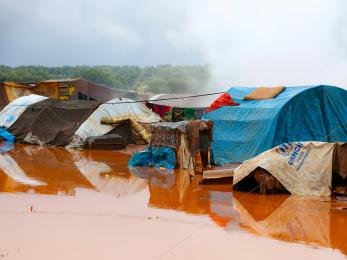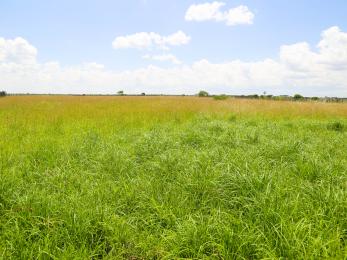Building Resilient Farming Systems

Across the globe, many smallholder farmers rely on agricultural practices that deplete soil fertility, reduce biodiversity, and strain water supplies to sustain their families. As ecosystem functioning diminishes, farmers find themselves trapped in a cycle of declining productivity and growing vulnerability. These challenges are further intensified by more frequent and severe climate shocks, including erratic rainfall, prolonged droughts, and destructive floods. Such disruptions threaten food security and undermine traditional farming systems, particularly in regions with limited resources to adapt. Farmers need solutions that build a foundation of healthy soils, encourage reliable water access, and cultivate a resilient, diverse agroecosystem to break the cycle.
The Resilience Design in Smallholder Farming Systems (RD) Approach* strengthens the resilience of smallholder farmers and their farming systems through thoughtful farm design and agroecological best practices. By adopting a principle-based farm design process that works with their surrounding natural systems, farmers can restore and improve their agricultural land by building healthy, living soils to enhance productivity and reduce erosion; prioritizing water management to ensure water is accessible to crops/plants; and enhancing biodiversity to improve ecosystem functioning. With proper household and/or community planning and management, RD sites can provide high yields of nutrient-dense, seasonal fruits, vegetables, and non-edible crops—such as building materials or medicinal plants—throughout the year.
The approach can be scaled from the garden level (termed permagarden), through to the landscape level, depending on the need and context. Within crisis settings, our focus is on developing small permagardens that capture rainwater and greywater, recycle all available organic inputs, and emphasize a diverse range of quick growing vegetables to provide farmers with short-term nutrition and income returns and lay the foundation for longer-term resilience.
*Developed by Mercy Corps, Warren Brush, Thomas Cole and Brad Lancaster
Benefits of Resilience Design
Ecological—Enhanced natural resources and ecosystem services through:
- Improved soil health
- Improved water availability
- Increased biodiversity
- Nutrient cycling and reused or diverted waste streams
Economic—Increased income stability through:
- Diversified and intensified production
- Reduced input costs through the use of local resources
Social—Strengthened skill sets, capacity, and confidence of household members through:
- Design driven by and rooted in the knowledge, choices and aspirations of the farmers
- Support for local innovators in becoming leaders
- Building social capital through increased capacity to share food and knowledge
Nutritional—Enriched nutritional status through:
- Increased access to a diverse and culturally appropriate diet throughout the year, especially during the dry or lean seasons
- Improved nutritional content of food through increased nutrient uptake of plants
Energy—Improved energy efficiency through:
- A design that reduces the time and energy needed to tend animals and crops
Additional Resources
Resilience Design
Learning documents
Assessment of the “Hill Approach”: a resilient agriculture food security project in DRC
The "Hill Approach" summary brief
The Story of the Sponge Village in Atego: a primer for agroecosystem restoration for climate action
Resilience Design Mentorship Pilot: Approach, Findings, and Lessons Learned
Permagarden
Technical documents
Permagarden Technical Manual 3rd Edition
Permagarden Adult Education Training Resources
Integrating Permagarden Approach: a tip sheet for programs
Permagarden: Technical Checklist Guidance
Permagarden Checklist
Determining the Success of your Permagarden
Example data collection tool
Learning documents
Gardening Under Drought Conditions: Permagarden Approach to Improve Food Security & Income Generation for Mother Care Group Participants
Webinar: The Permagarden Pathway to Resilience & Food Security: Lessons from Scaling up from Nepal and Uganda
How permagardens and kitchen gardens contribute to household food security: An assessment of gardens in Nepal
Other climate resilient agriculture documents
Fertilizing with Organic Materials for Smallholder Farmers in Emergency and Non-Emergency Contexts
Triggering Change: Five Pivotal Moments in Permagarden & Resilience Design Training
Social and Behavior Change in Agriculture and Natural Resources Management
Best Practices: Cascading Resilient Agriculture Approaches within Food Security Programs

